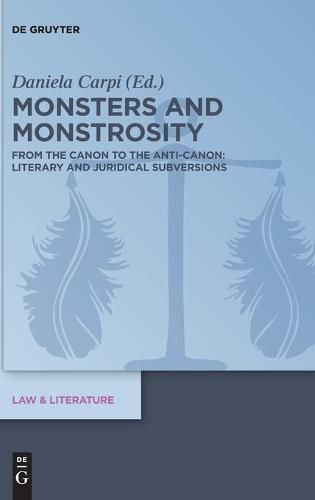Readings Newsletter
Become a Readings Member to make your shopping experience even easier.
Sign in or sign up for free!
You’re not far away from qualifying for FREE standard shipping within Australia
You’ve qualified for FREE standard shipping within Australia
The cart is loading…






This title is printed to order. This book may have been self-published. If so, we cannot guarantee the quality of the content. In the main most books will have gone through the editing process however some may not. We therefore suggest that you be aware of this before ordering this book. If in doubt check either the author or publisher’s details as we are unable to accept any returns unless they are faulty. Please contact us if you have any questions.
Every culture knows the phenomenon of monsters, terrifying creatures that represent complete alterity and challenge every basic notion of self and identity within a cultural paradigm. In Latin and Greek culture, the monster was created as a marvel, appearing as something which, like transgression itself, did not belong to the assumed natural order of things. Therefore, it could only be created by a divinity responsible for its creation, composition, goals and stability, but it was triggered by some in- or non-human action performed by humans. The identification of something as monstrous denotes its place outside and beyond social norms and values. The monster-evoking transgression is most often indistinguishable from reactions to the experience of otherness, merging the limits of humanity with the limits of a given culture. The topic entails a large intersection among the cultural domains of law, literature, philosophy, anthropology, and technology. Monstrosity has indeed become a necessary condition of our existence in the 21st century: it serves as a representation of change itself. In the process of analysis there are three theoretical approaches: psychoanalytical, representational, ontological. The volume therefore aims at examining the concept of monstrosity from three main perspectives: technophobic, xenophobic, superdiversity. Today’s globalized world is shaped in the unprecedented phenomenon of international migration. The resistance to this phenomenon causes the demonization of the Other, seen as the antagonist and the monster. The monster becomes therefore the ethnic Other, the alien. To reach this new perspective on monstrosity we must start by examining the many facets of monstrosity, also diachronically: from the philological origin of the term to the Roman and classical viewpoint, from the Renaissance medical perspective to the religious background, from the new filmic exploitations in the 20th and 21st centuries to the very recent ethnological and anthropological points of view, to the latest technological perspective , dealing with artificial intelligence.
$9.00 standard shipping within Australia
FREE standard shipping within Australia for orders over $100.00
Express & International shipping calculated at checkout
This title is printed to order. This book may have been self-published. If so, we cannot guarantee the quality of the content. In the main most books will have gone through the editing process however some may not. We therefore suggest that you be aware of this before ordering this book. If in doubt check either the author or publisher’s details as we are unable to accept any returns unless they are faulty. Please contact us if you have any questions.
Every culture knows the phenomenon of monsters, terrifying creatures that represent complete alterity and challenge every basic notion of self and identity within a cultural paradigm. In Latin and Greek culture, the monster was created as a marvel, appearing as something which, like transgression itself, did not belong to the assumed natural order of things. Therefore, it could only be created by a divinity responsible for its creation, composition, goals and stability, but it was triggered by some in- or non-human action performed by humans. The identification of something as monstrous denotes its place outside and beyond social norms and values. The monster-evoking transgression is most often indistinguishable from reactions to the experience of otherness, merging the limits of humanity with the limits of a given culture. The topic entails a large intersection among the cultural domains of law, literature, philosophy, anthropology, and technology. Monstrosity has indeed become a necessary condition of our existence in the 21st century: it serves as a representation of change itself. In the process of analysis there are three theoretical approaches: psychoanalytical, representational, ontological. The volume therefore aims at examining the concept of monstrosity from three main perspectives: technophobic, xenophobic, superdiversity. Today’s globalized world is shaped in the unprecedented phenomenon of international migration. The resistance to this phenomenon causes the demonization of the Other, seen as the antagonist and the monster. The monster becomes therefore the ethnic Other, the alien. To reach this new perspective on monstrosity we must start by examining the many facets of monstrosity, also diachronically: from the philological origin of the term to the Roman and classical viewpoint, from the Renaissance medical perspective to the religious background, from the new filmic exploitations in the 20th and 21st centuries to the very recent ethnological and anthropological points of view, to the latest technological perspective , dealing with artificial intelligence.